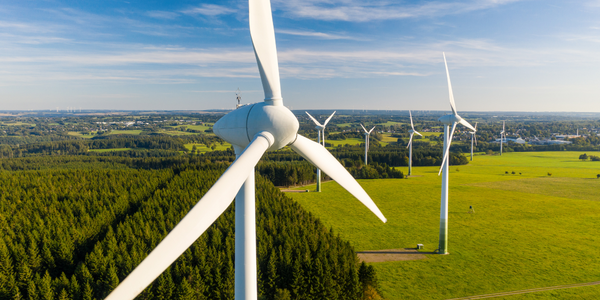下载PDF
New Sun Road Connects Uganda to Clean and Reliable Energy

技术
- 分析与建模 - 实时分析
- 功能应用 - 远程监控系统
- 网络与连接 - 蜂窝
- 平台即服务 (PaaS) - 设备管理平台
- 传感器 - 温度传感器
适用行业
- 可再生能源
适用功能
- 商业运营
用例
- 能源管理系统
挑战
New Sun Road 是一家注册的加州福利公司,致力于实施气候变化和全球能源贫困的解决方案。这群才华横溢的工程师正在与乌干达绿色能源初创公司 GRS Commodities 合作,为乌干达维多利亚湖的塞塞群岛提供可靠和清洁的电力。试点系统的目标是为基托博岛上的企业提供价格合理且可靠的太阳能电力。部署太阳能电网虽然不小,但可能是解决方案中最简单的部分。太阳能是电源的明显选择,因为它经济且部署相对简单。主要困难在于管理电网并确保适当的维护,而不必在每个位置都在现场。远程监控电网的能力将使新太阳路能够以更有效的方式扩展其在整个塞塞群岛的服务,因为每个电网都可以从一个中心位置进行监控。但是,在通信选择有限的偏远地区,您如何远程监控和管理智能太阳能电网?如果没有本地 ISP,这可能是一项复杂的挑战,因此团队决定通过全球蜂窝网络实现远程连接。除了通信挑战之外,新太阳路必须克服的另一个主要困难是在其网络集线器内寻找能够承受高温的设备。该设备将位于阳光直射的 NEMA 外壳内,因此必须具备在极高温度下运行的能力。
客户
新太阳路
关于客户
New Sun Road 是一家注册的加州福利公司,致力于实施气候变化和全球能源贫困的解决方案。他们将金融、工程、经济和保护方面的专业知识带入与当地企业的合作伙伴关系中
解决方案
New Sun Road 选择了 Digi TransPort WR11 XT 来连接可用的 3G HSPA+ 网络,从而实现对电网的远程监控。 WR11 XT 提供与全球 3G 网络的可靠连接,同时能够承受网络实用程序中心的高工作温度。 New Sun Road 团队需要确保他们能够远程有效地管理电网,以防断电或任何其他可能中断客户服务的问题。使用 Digi Remote Manager,他们的运营团队可以轻松推出新的设备配置、固件更新,并远程诊断和修复网络中的任何问题。云管理平台还可以监控设备温度,并在设备开始达到用户定义的温度阈值以及他们选择主动监控的设备状态的任何其他变化时向团队发出警报。 New Sun Road 解决方案的一个独特部分是该公司开发的定制软件应用程序,用于为太阳能发电系统和最终用户的电力使用提供实时分析和远程控制。分析引擎允许团队在问题发生之前预测问题、确保正确维护、了解用户需求并持续优化系统。
运营影响
数量效益
相关案例.

Case Study
Remote Monitoring & Predictive Maintenance App for a Solar Energy System
The maintenance & tracking of various modules was an overhead for the customer due to the huge labor costs involved. Being an advanced solar solutions provider, they wanted to ensure early detection of issues and provide the best-in-class customer experience. Hence they wanted to automate the whole process.

Case Study
Vestas: Turning Climate into Capital with Big Data
Making wind a reliable source of energy depends greatly on the placement of the wind turbines used to produce electricity. Turbulence is a significant factor as it strains turbine components, making them more likely to fail. Vestas wanted to pinpoint the optimal location for wind turbines to maximize power generation and reduce energy costs.

Case Study
Siemens Wind Power
Wind provides clean, renewable energy. The core concept is simple: wind turbines spin blades to generate power. However, today's systems are anything but simple. Modern wind turbines have blades that sweep a 120 meter circle, cost more than 1 million dollars and generate multiple megawatts of power. Each turbine may include up to 1,000 sensors and actuators – integrating strain gages, bearing monitors and power conditioning technology. The turbine can control blade speed and power generation by altering the blade pitch and power extraction. Controlling the turbine is a sophisticated job requiring many cooperating processors closing high-speed loops and implementing intelligent monitoring and optimization algorithms. But the real challenge is integrating these turbines so that they work together. A wind farm may include hundreds of turbines. They are often installed in difficult-to-access locations at sea. The farm must implement a fundamentally and truly distributed control system. Like all power systems, the goal of the farm is to match generation to load. A farm with hundreds of turbines must optimize that load by balancing the loading and generation across a wide geography. Wind, of course, is dynamic. Almost every picture of a wind farm shows a calm sea and a setting sun. But things get challenging when a storm goes through the wind farm. In a storm, the control system must decide how to take energy out of gusts to generate constant power. It must intelligently balance load across many turbines. And a critical consideration is the loading and potential damage to a half-billion-dollar installed asset. This is no environment for a slow or undependable control system. Reliability and performance are crucial.

Case Study
Remote Monitoring and Control for a Windmill Generator
As concerns over global warming continue to grow, green technologies are becoming increasingly popular. Wind turbine companies provide an excellent alternative to burning fossil fuels by harnessing kinetic energy from the wind and converting it into electricity. A typical wind farm may include over 80 wind turbines so efficient and reliable networks to manage and control these installations are imperative. Each wind turbine includes a generator and a variety of serial components such as a water cooler, high voltage transformer, ultrasonic wind sensors, yaw gear, blade bearing, pitch cylinder, and hub controller. All of these components are controlled by a PLC and communicate with the ground host. Due to the total integration of these devices into an Ethernet network, one of our customers in the wind turbine industry needed a serial-to-Ethernet solution that can operate reliably for years without interruption.

Case Study
Temperature monitoring for vaccine fridges
Dulas wanted a way to improve the reliability of the cold chain, facilitating maintenance and ensuring fewer vaccines are spoiled. Dulas wanted an M2M solution which would enable them to record and report the temperature inside vaccine refrigerators.

Case Study
IoT Powering A New Way to Light Streets with Bifacial Solar Panels
When James Meringer’s commercial contracting business experienced a rapid increase in solar projects, he also saw an opportunity to extend the benefits of solar by using the bifacial solar panels he’d become familiar with in new ways. Bifacial solar panels enable sunlight from both sides of the panel, making it a more efficient harvest of solar power. Seeing the panel’s power, James and his team set out to use the same technology for street lighting. Until now, solar street lights have served as utilitarian solutions that force designers to choose between form and function. The Mira Bella Energy team has changed that.





